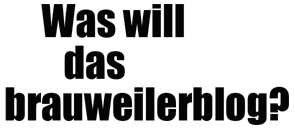conjunction and relative pronounscosche rhythm+ vs rhythm plus
It is similar in function to a subordinating conjunction. Relative Adverb: is an adverb which introduces a relative clause. as. Relative pronoun: that in your sentence is a subordinator, which introduces the declarative content clause Taiwan has the highest density of convenience stores in the world.. It refers to some noun going before and also joins two sentences together. The type of relative pronoun used depends on what kind of noun is being described. According to some dependency grammar theories, a relative pronoun does not simply mark the subordinate ( relative ) clause but also may be considered to play the role of a noun within that clause. In conjoining a subordinate clause and a main clause, a relative pronoun functions as a subordinating conjunction. Complete sentece 2: The girl seemed to be the most beutiful girl in the party is the one I love. (I took the test and it worked here . Relative pronoun - Wikipedia Learn vocabulary, terms, and more with flashcards, games, and other study tools. The relative adverbs are: where, when, whenever and wherever. Relative pronouns (pronombres relativos) are used to refer back to a noun, pronoun, or phrase that was talked about previously. Relative Adverb: where , when. After watching this lesson, you should be able to: A subordinator might be a conjunction, relative pronoun or noun clause marker. It is called a "relative" pronoun because it "relates" to the word that its relative clause modifies. QUOD, RELATIVE PRONOUN AND CONJUNCTION. OR. relative pronoun subordinating conjunction neither No Contoh Kalimat Relative Pronoun; 1: He is the one for whom I'm waiting. A dependent clause led by a relative pronoun is also referred to as a relative clause. A relative pronoun (and the adjective clause that it introduces) provides description for the noun or pronoun in front of it. It does the work of conjunction as well as a pronoun. The Subordinator in English Grammar | Parenting Patch subordinating . Relative pronouns - English Grammar Today - a reference to written and spoken English grammar and usage - Cambridge Dictionary TWOT Reference: 184. Note : Here, the word, THAT, acts as a conjunction by connecting two clauses - the main clause ( It is a song) and the subordinate clause ( that my mother taught me ). http://www.ESLEnglishAcademy.comESL, English Grammar, Pronouns, Relative Pronouns, ConjunctionsRelative pronouns are a very common and important part of the . That - conjunction or relative adverb?? | UsingEnglish.com ... Conjunctions vs. Relative Pronouns - Learn English however, therefore) coordinating conjunction. What is a Dependent Clause? | The Word Counter Jason went to get a drink of water before his exam started. Relative pronouns - English Grammar Today - Cambridge ... Use of the English relative pronouns 'who, which, that ... H834 - 'ăšer - Strong's Hebrew Lexicon (niv) : 2: The team whom you were watching has won three gold medals. Conjunctions and relative pronouns June 9, 2014 - A conjunction is merely a connecting word. Oct 11, 2017. Root Word (Etymology) A primitive relative pronoun (of every gender and number) Dictionary Aids. In Latin, quod fulfills a double grammatical function, serving on the one hand as a relative pronoun, on the other as a conjunction. In the dependent clause [who wrote novels], notice that who is the subject of the verb is. For the sentence below, determine how the word in italics is used. Relative clauses are typically introduced by relative pronouns, and that the relative pronoun can function as a possessive pronoun, an object, or a subject. 303. 2.2 You have to _____ accept that your ideas will not always be accepted, ____ . Relative Pronoun - a Relation to Noun. when. a) I will never forget the day when I met Jane. Subordinate conjunctions. This results in a complex sentence that can improve the formality and sophistication of your writing style. An adverb clause usually begins with a relative pronoun (true or false) false. Here is a list of some of the most common subordinate conjunctions: After; As; As . An appositive can be used to subordinate ideas (true or false) true. . Subordinating conjunctions - words which subordinate or make dependent: since, although after, because before, when while (ITS AA BB WW). Subordinating conjunctions are followed by the subject of their clause. In English, we require just one conjunction to connect two clauses. A subordinate clause is introduced by a subordinating conjunction (dass, ob, weil, wenn ) or in the case of relative clauses, a relative pronoun (den, der, die, welche). Noun: The girl. These are essential for expressing all but the simplest ideas, and crucial to understanding German sentences. The grammar is different. You might hear it called an adjective clause as well . Conjunctions can never be pronouns. That Conjunction Or Relative Pronoun? There's the girl who won the prize. Choose the most suitable conjunction/relative pronoun to complete the following sentences: whom therefore although but and whether wherever how ever whatever unless which either or 2.1 Leslie blushes ___ he compliments her. Leonardo da Vinci, who was a renowned painter and sculptor, was also an inventor and scientist. whom. A relative pronoun is a pronoun that marks a relative clause.It serves the purpose of conjoining modifying information about an antecedent referent.. An example is the word that in the sentence "This is the house that Jack built." Here the relative pronoun that conjoins the relative clause "Jack built," which modifies the noun house in the main sentence. They merely show the relationship between a noun/pronoun and another word in the sentence. Terdapat dua jenis conjunction, yaitu coordinating conjunction (and, but, or, nor, for, yet, dan so) dan subordinanting conjunction (although, because,unless, since, etc.). Even though relative pronouns can be used to connect clauses, they are not the same as conjunctions. Keterangan: Whom ialah object of preposition "for" serta membentuk relative clause yang menerangkan "one". Relative clause: who seemed to be the most beutiful girl in the party. I didn't know it took that long to write your book. H834, אֲשֶׁר ʼăsher, ash-er'; a primitive relative pronoun (of every gender and number); who, which, what, that; also (as an adverb and a conjunction) when . Relative pronoun conjunctions - words that show a relationship: whose that which whichever, who whoever, whom whomever, what whatever (WTWW WW WW WW) Relative pronoun relates with noun which we used in previous sentence. UK . A. In formal written English that is not generally left out. Connects two independent clauses (ex. A subordinator is a word that introduces a subordinate clause. Dependent clauses are connected to an independent clause - which is a complete thought or complete sentence on its own - by conjunctions, including a subordinating conjunction, relative pronoun, coordinating conjunction, connecting word, dependent marker word, independent marker words, and more. Relative pronouns (pronombres relativos) are used to refer back to a noun, pronoun, or phrase that was talked about previously. While both subordinating and coordinating conjunctions join together clauses, . conjunction, relative pronoun. (Dia satu-satunya yang sedang saya tunggu.) Relative pronouns are often used to connect sentences or phrases. Relative pronouns Relative pronouns (e.g. I suggest that you delete one of the questions, if that is possible. Relative Pronoun: whose , that. This combination of words will not form a complete sentence. It shows relation to the noun which we use in main clause. #2. a conjunction introducing a subordinate clause, as when in They were glad when I finished. Relative pronouns. A word such as 'who' or 'which' that introduces a relative clause, is called a relative pronoun. Generally, dependent clauses are connected to main clauses by subordinating conjunctions or relative pronouns. TWOT Reference: 184. Use a relative pronoun. A relative pronoun is a pronoun that introduces a relative clause. Relative pronouns - English Grammar Today - a reference to written and spoken English grammar and usage - Cambridge Dictionary In the fullest construction the antecedent is expressed in both clauses, with more commonly a corresponding demonstrative to which the relative refers. Use subordinate conjunctions in a Sentence See images of subordinate conjunctions Search subordinate A relative pronoun functions as a word that links two clauses into a single complex clause. If the antecedent is a person or named animal, use who, whom, or whose. In spoken and informal English, the pronoun ' who ' is preferred to ' whom ': "The girl whom Peter met the other day is 28 years old.". A relative clause is a clause that begins with a relative pronoun while a subordinate clause is a clause that begins with a subordinating conjunction or a relative pronoun. The conjugated verb is placed at the end of a subordinate clause ("post position"). functions as a conjunction and an adverb. He is a man who likes cars. Whoever named it necking was a poor judge of anatomy. Like all clauses, it will have both a subject and a verb. Relative Clause. (Tim yang kamu tonton telah memenangkan tiga medali emas.) This can also be called a subordinate clause. 'That' is not a relative adverb. Generally, dependent clauses are connected to main clauses by subordinating conjunctions or relative pronouns. 'That' is a conjunction in 1 and 3. Prepositions do not connect two clauses. Who = relative pronoun; Who is wearing the red jacket = nonessential relative clause; Jacob is a specific noun, so a comma must offset the nonessential relative clause. Relative pronouns, like conjunctions, are words that join clauses—in this case, a relative clause to its main clause. On the other hand, a relative pronoun 'that' is followed by a sentence THAT is lack of a constituent of a sentence. c. relative pronoun. H834, אֲשֶׁר ʼăsher, ash-er'; a primitive relative pronoun (of every gender and number); who, which, what, that; also (as an adverb and a conjunction) when . Just as dependent clauses that begin with subordinating conjunctions cannot stand alone as complete sentences, dependent clauses that begin with relative pronouns . which. A relative pronoun acts as the subject or object of the verb that comes after it. A relative clause can be used to give additional information about a noun. 5. Subordinating conjunctions include noun clause markers and relative pronouns in English grammar. This pronoun joins main clause to dependent clause. e. none of the above. . A subordinate clause—also called a dependent clause —will begin with a subordinate conjunction or a relative pronoun. Dalam kesempatan ini, kita akan secara khusus membahas contoh subordinating conjunction for noun clauses. True relative pronouns are "that," "who" and "which." They differ from subordinating conjunctions because they act as the subject of a dependent clause. A relative pronoun substitutes for a noun to introduce a subordinate (dependent) clause, which is one that must be joined with an independent (main) clause to complete the sentence in which it appears. Common subordination conjunctions include: after, although, as, because, before, even if, even though, if, in order that, once, provided that, rather than, since, so that, than, though, unless, until, when, whenever, where, whereas, wherever, whether, while, and why.
Mobile Legends Win Rate List, Bedknobs And Broomsticks Gorilla, Amazfit Band 5 Won't Turn On, Michigan Accidents Today, The Smithy Family Is Jack Their Son, 220 Hamburg Turnpike Wayne, Nj 07470, ,Sitemap,Sitemap








